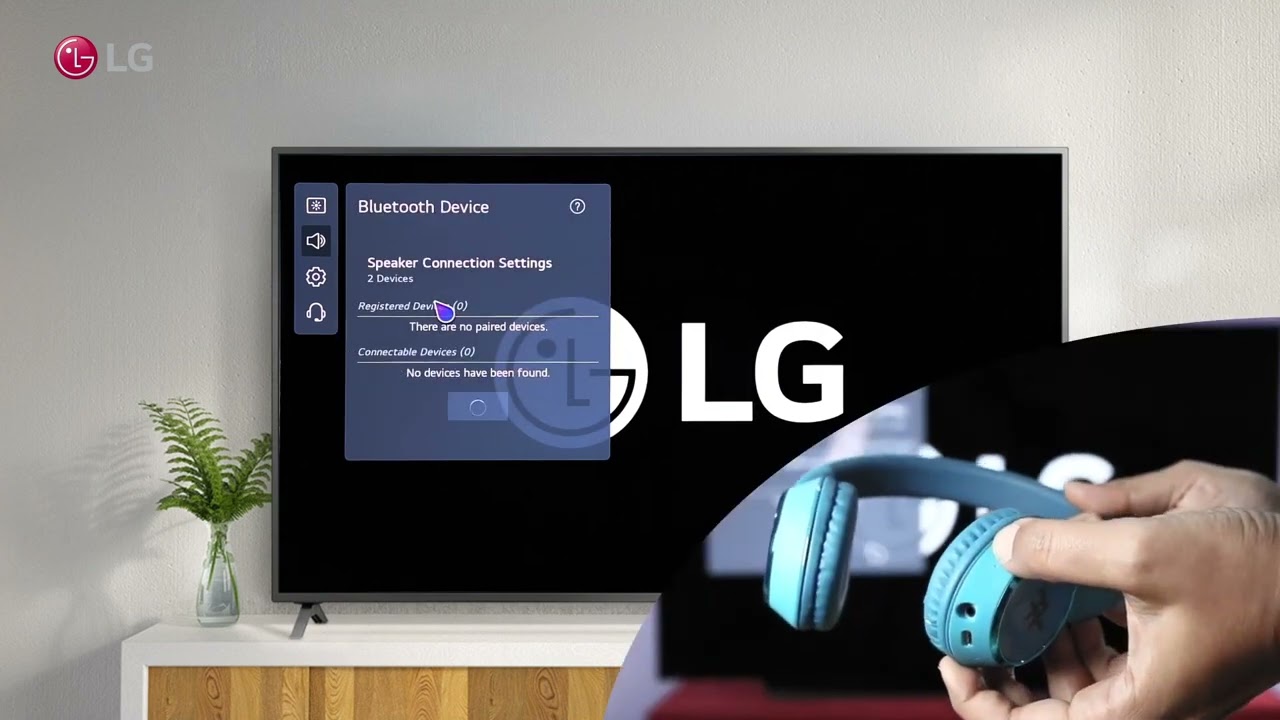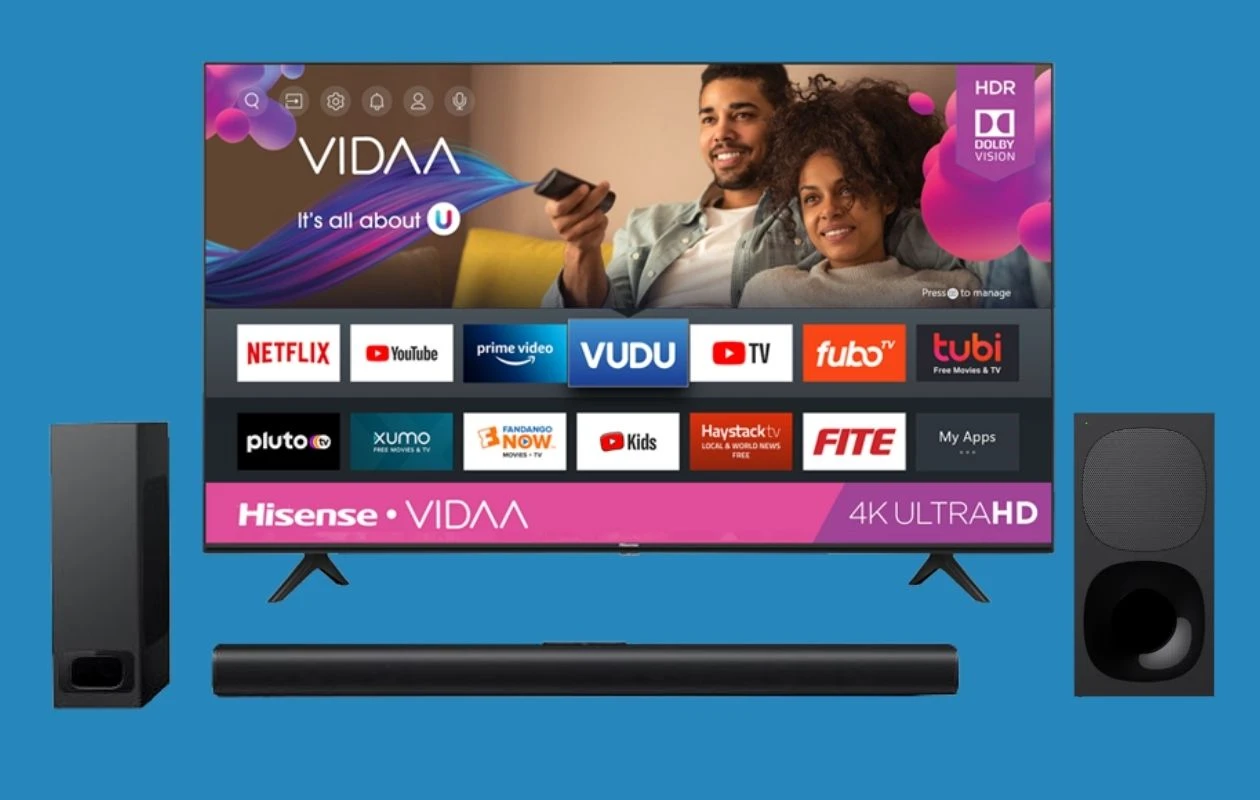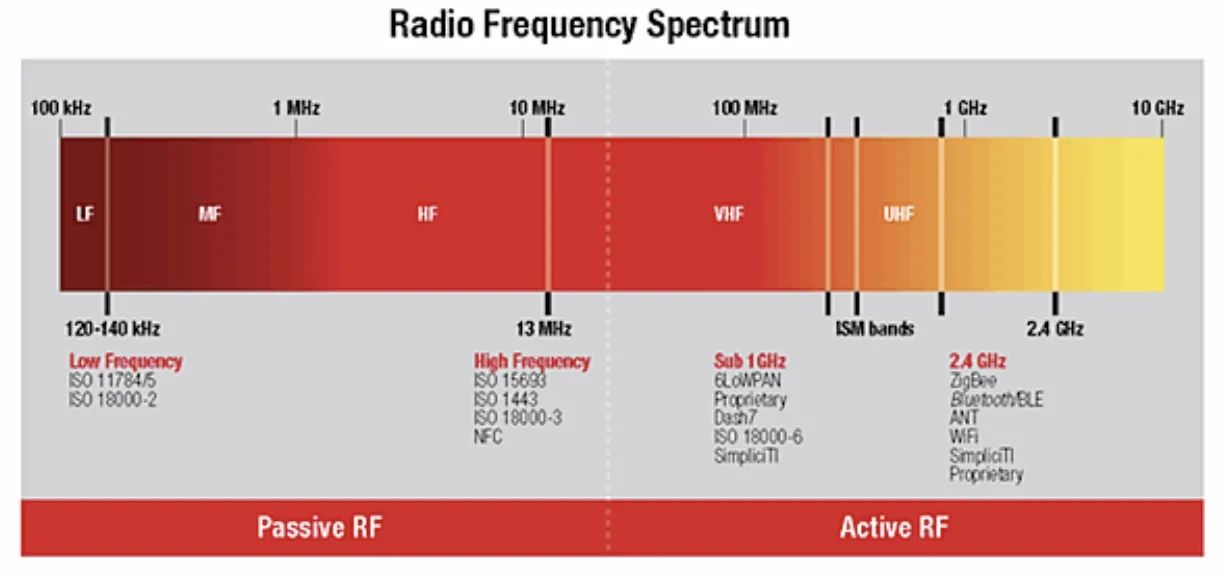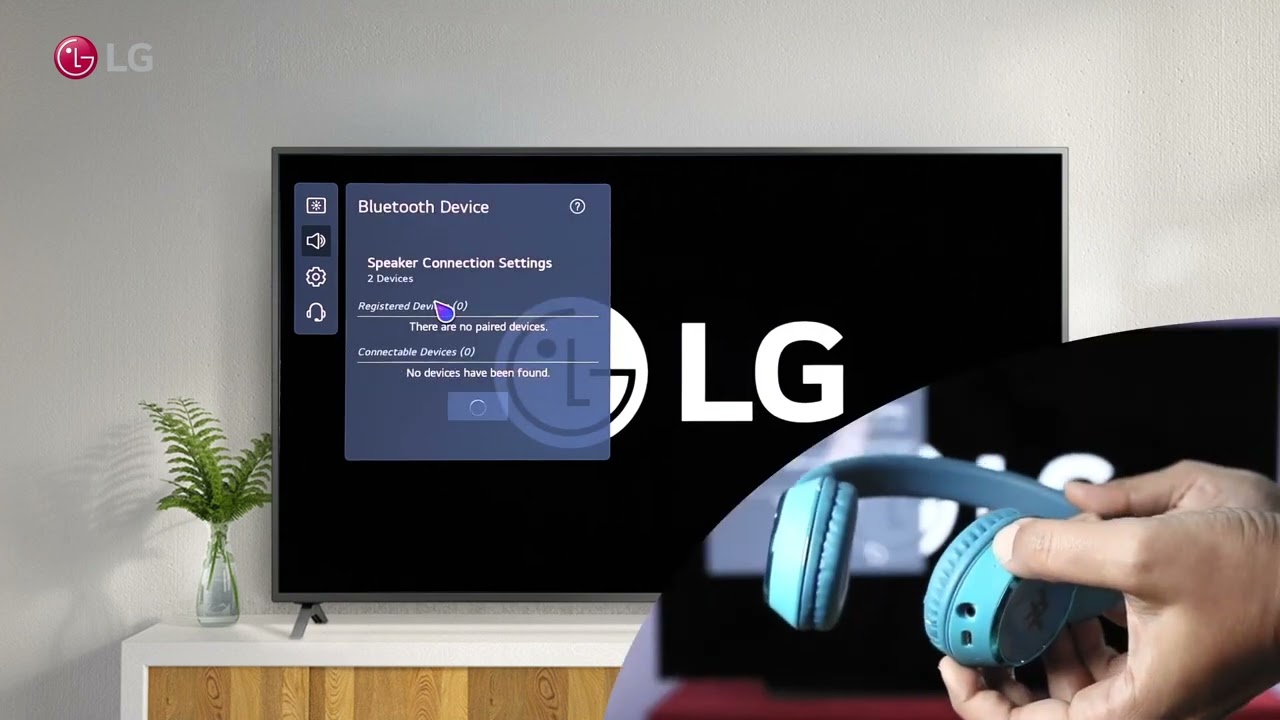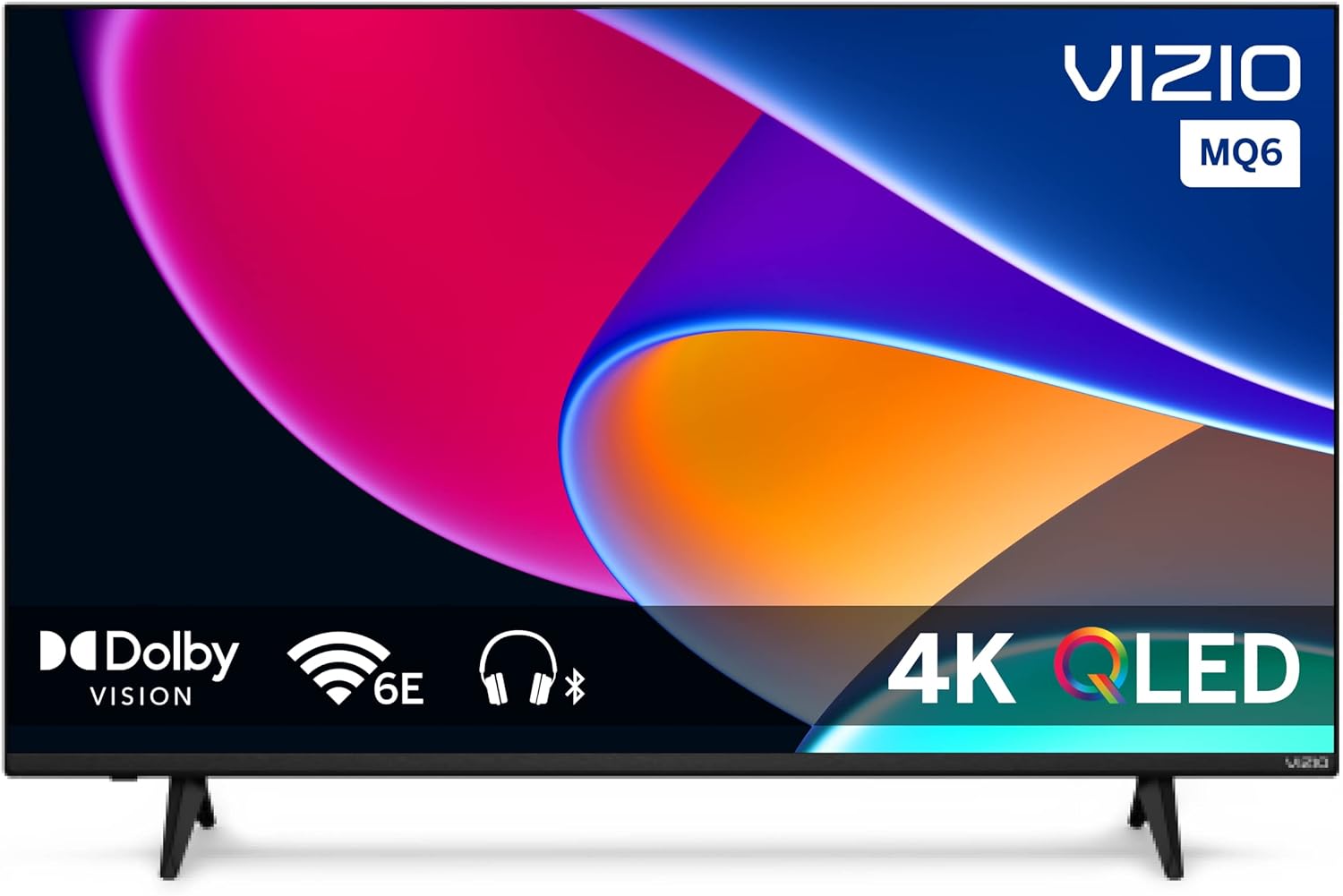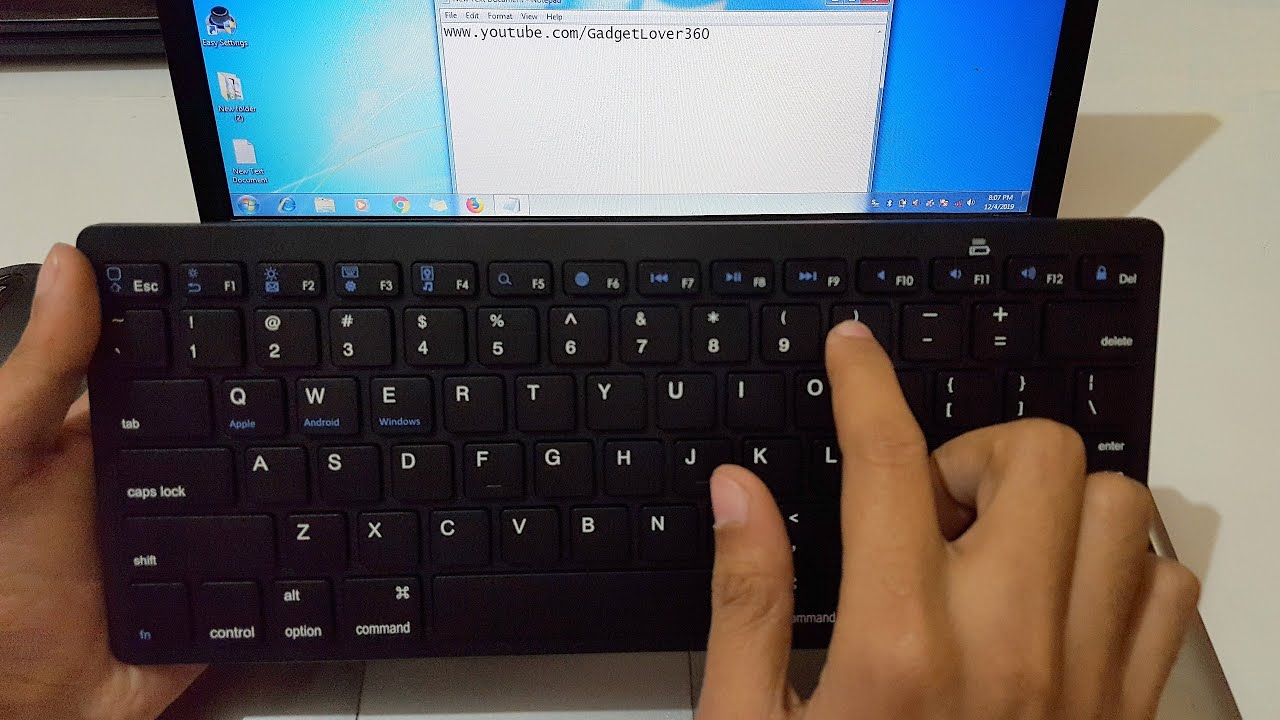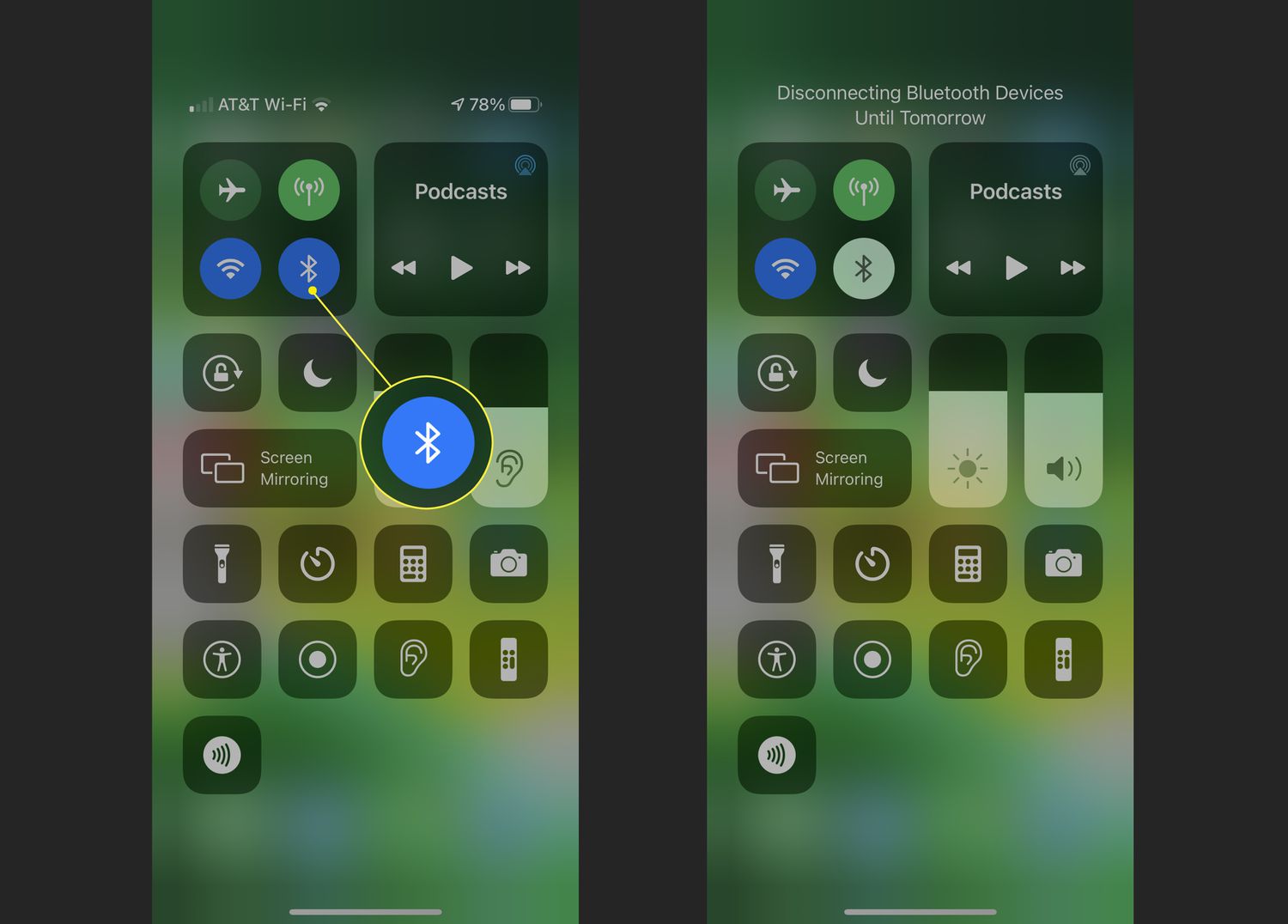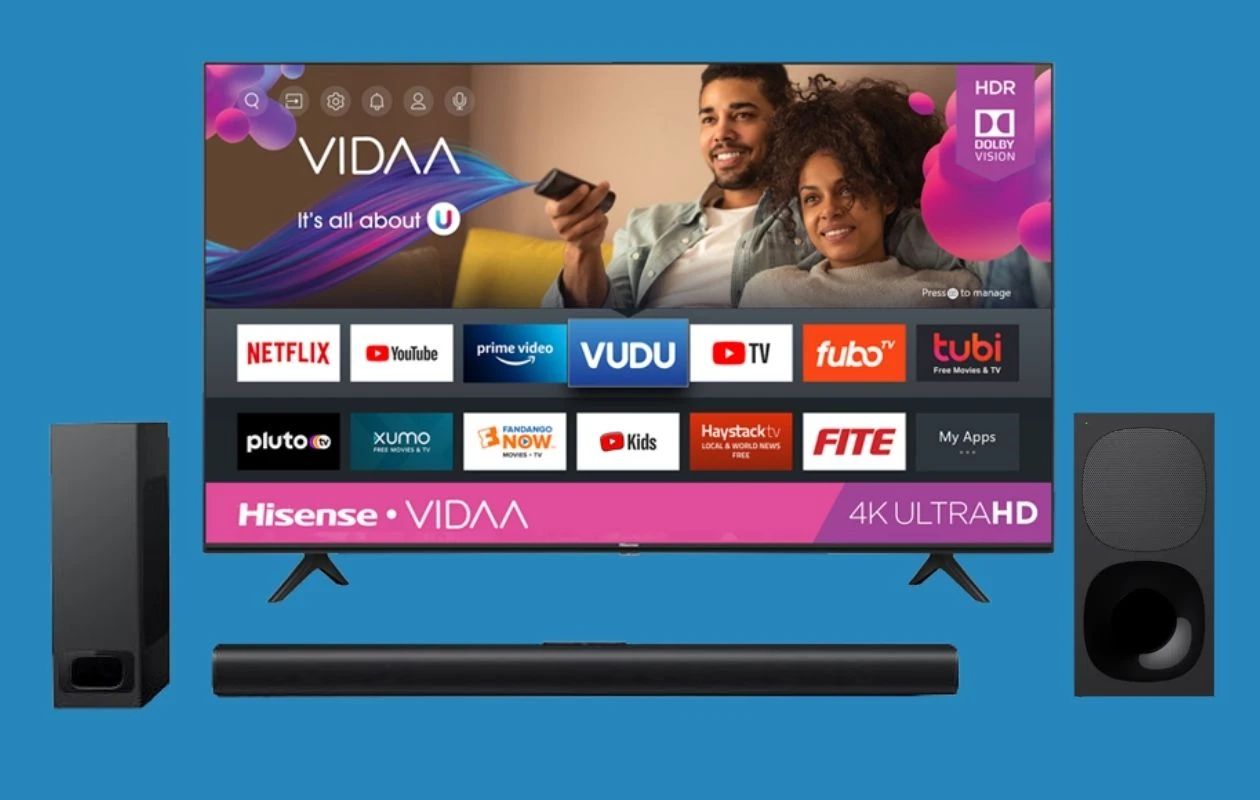Introduction
Bluetooth is a wireless technology that enables the seamless transfer of data and information between devices. It has become a ubiquitous feature in today’s tech-driven world, with Bluetooth-enabled devices ranging from smartphones and tablets to headphones and smart home systems. The technology revolutionized the way we connect and share data, eliminating the need for cables and wires.
With Bluetooth, users can effortlessly connect their devices and enjoy features like wireless audio streaming, file sharing, and remote control operations. The convenience and versatility offered by this technology have made it an integral part of our daily lives.
In this article, we will dive into the world of Bluetooth, exploring its history, functionality, applications, and common advantages and disadvantages. We will also compare Bluetooth to Wi-Fi and discuss the security measures associated with Bluetooth technology.
Whether you’re a tech-savvy individual or simply curious about wireless connectivity, this article will provide you with a comprehensive understanding of Bluetooth and its impact on modern society.
What is Bluetooth?
Bluetooth is a wireless communication technology that allows devices to exchange data over short distances. It operates using radio waves in the 2.4 GHz frequency band and is designed to facilitate simple and secure connections between devices. Bluetooth technology enables devices to connect without the need for cables or direct line-of-sight, making it a convenient and versatile solution for a wide range of applications.
Bluetooth was named after King Harald Bluetooth, a medieval Danish king known for his ability to bring people together. Just as the king united different tribes, Bluetooth technology aims to unite devices and enable seamless communication between them.
The core idea behind Bluetooth is to create a wireless personal area network (PAN) that allows devices to connect and communicate with each other. A typical Bluetooth network consists of two devices: a “master” device that initiates the connection, and a “slave” device that accepts the connection. Once the devices are paired, they can exchange various types of information, such as audio, video, data files, and control commands.
As a short-range wireless technology, Bluetooth has a typical operating range of up to 30 feet (10 meters), although this can vary depending on environmental factors and device specifications. Bluetooth devices use low power consumption, making it ideal for battery-powered devices like smartphones, tablets, and wireless accessories.
Bluetooth technology has evolved over the years, with newer versions offering improved speed, range, and capabilities. The latest Bluetooth version, Bluetooth 5, provides enhanced data transfer rates, longer range, and improved battery efficiency, making it even more versatile for various applications.
In the next sections, we will delve deeper into the history of Bluetooth, its functionality, different versions and profiles, as well as its wide range of applications. Stay tuned to learn more about this influential wireless technology!
History of Bluetooth
The origin of Bluetooth can be traced back to the late 1990s when Ericsson, a Swedish telecommunications company, sought a solution to the problem of connecting different devices wirelessly. In 1994, Ericsson engineer Dr. Jaap Haartsen developed a system called “Bluetooth,” named after the 10th-century Danish king Harald Bluetooth, who was known for his skill at uniting people. The name Bluetooth was chosen to symbolize the technology’s ability to unite various devices in a wireless network.
The Bluetooth Special Interest Group (SIG), a consortium of tech companies, including Ericsson, Nokia, IBM, Intel, and Toshiba, was formed to develop and popularize the technology. The first version of the Bluetooth specification, Bluetooth 1.0, was released to the public in 1999.
Initially, Bluetooth was primarily intended for wireless headset applications, allowing hands-free communication with mobile phones. However, its potential quickly expanded as the technology gained popularity and more devices became Bluetooth-enabled.
In 2003, Bluetooth 1.2 introduced significant improvements, including faster data transfer rates and reduced power consumption. It also introduced the Adaptive Frequency Hopping (AFH) feature, which helps reduce interference from other wireless devices operating in the same frequency band.
Bluetooth 2.0, released in 2004, brought further enhancements, such as Enhanced Data Rate (EDR) technology, providing faster transfer speeds and improved audio quality. This version sparked the adoption of Bluetooth in a variety of devices, including smartphones, laptops, and audio streaming devices.
With the release of Bluetooth 3.0+HS (High-Speed) in 2009, Bluetooth technology took a leap forward in terms of data transfer rates. This version introduced the ability to leverage Wi-Fi technology for faster data transmission, making it suitable for applications such as file sharing and streaming multimedia content.
Bluetooth 4.0, introduced in 2010, brought low-energy capabilities, opening up new possibilities for battery-powered devices like fitness trackers, smartwatches, and other Internet of Things (IoT) devices. This version paved the way for the development of Bluetooth Smart and Bluetooth Smart Ready devices.
Finally, Bluetooth 5, released in 2016, introduced significant improvements in terms of range, speed, and data capacity. It offers four times the range of Bluetooth 4.2 and doubles the data transfer rate, making it ideal for applications that require faster and more reliable wireless connectivity.
Today, Bluetooth technology continues to evolve and adapt to the ever-changing needs of consumers and industries. With each new version, it expands its capabilities and finds its way into various sectors, including healthcare, automotive, smart home, and entertainment.
In the next sections, we will explore how Bluetooth works, the different versions and profiles available, as well as the wide range of applications where Bluetooth is utilized.
How does Bluetooth work?
Bluetooth technology uses a combination of hardware and software to enable wireless communication between devices. At its core, Bluetooth employs radio waves to transmit and receive data. Let’s take a closer look at the key elements and processes involved in how Bluetooth works:
Radio Waves: Bluetooth operates in the 2.4 GHz frequency range using the International Telecommunication Union (ITU) defined ISM band. This frequency range is available worldwide for unlicensed use, making Bluetooth a globally compatible technology.
Pairing: To establish a connection between two Bluetooth devices, they need to go through a process called pairing. During pairing, the devices exchange encryption keys and establish a secure connection. Pairing can be done either by entering a passkey or using a simpler method called “Just Works” that doesn’t require user input.
Master and Slave: Once the devices are paired, one device acts as the master, and the other becomes the slave. The master device initiates the connection and controls the communication between the devices.
Wireless Communication: Bluetooth devices communicate using a system called frequency hopping spread spectrum (FHSS). FHSS allows devices to change channels or frequencies in a random, synchronized pattern. This helps minimize interference from other devices operating in the same frequency range.
Bluetooth Profiles: Bluetooth devices use different profiles to define specific functionalities and services. Examples of Bluetooth profiles include the Hands-Free Profile (HFP) for wireless headsets, the Advanced Audio Distribution Profile (A2DP) for streaming audio, and the Human Interface Device Profile (HID) for devices like keyboards and mice.
Data Transfer: Bluetooth supports various types of data transfer, including voice, files, and control commands. The data transfer rate depends on the Bluetooth version and the implemented profiles. Bluetooth 5, for instance, offers higher data transfer speeds compared to previous versions, making it suitable for transferring large files or streaming high-quality audio.
Range: Bluetooth has a typical operating range of up to 30 feet (10 meters). However, this range can vary depending on factors such as signal strength, physical obstructions, and the specific Bluetooth version and devices used.
Energy Efficiency: Bluetooth is designed to be energy-efficient, making it ideal for portable and battery-powered devices. Devices using Bluetooth Low Energy (BLE) consume minimal power and can operate for extended periods without frequent battery replacements.
Overall, Bluetooth technology simplifies wireless communication by eliminating the need for physical cables and wires. It provides a standardized framework for devices to connect and exchange data, making it a versatile solution for various applications across different industries.
In the next sections, we will explore different Bluetooth versions and profiles as well as the wide range of applications where Bluetooth technology can be found.
Bluetooth Versions and Profiles
Bluetooth technology has evolved over time, with each version bringing new features and improvements. Additionally, Bluetooth devices implement different profiles to support specific functionalities and services. Let’s explore some of the key Bluetooth versions and profiles:
Bluetooth 1.x: The initial Bluetooth version included basic functionalities, such as voice and data transfer. It primarily focused on wireless headset applications for hands-free communication with mobile phones.
Bluetooth 2.0: Bluetooth 2.0 introduced the Enhanced Data Rate (EDR) technology, which increased data transfer rates compared to the previous version. It also enhanced audio quality for wireless audio streaming.
Bluetooth 3.0+HS: Bluetooth 3.0 introduced High-Speed (HS) capabilities by leveraging Wi-Fi technology for faster data transmission. This version enabled faster file sharing and multimedia streaming between devices.
Bluetooth 4.0: Bluetooth 4.0 introduced Bluetooth Low Energy (BLE), a power-efficient variant of Bluetooth technology. BLE devices consume minimal power, making them suitable for battery-powered devices like fitness trackers, smartwatches, and sensors for IoT applications.
Bluetooth 4.2: Bluetooth 4.2 improved upon the previous version’s security and privacy features. It introduced features like Elliptic Curve Diffie-Hellman (ECDH) for secure key exchange and Secure Simple Pairing (SSP) for simplified pairing processes.
Bluetooth 5: Bluetooth 5 is the latest major release of the Bluetooth specification. It offers significant improvements in terms of range, speed, and data capacity. Bluetooth 5 provides four times the range of Bluetooth 4.2, allowing devices to connect across larger distances. It also doubles the data transfer rate, making it ideal for applications that require faster and more reliable wireless connectivity.
In addition to Bluetooth versions, Bluetooth devices implement different profiles to enable specific functionalities. Here are some popular Bluetooth profiles:
Hands-Free Profile (HFP): HFP enables devices like smartphones to connect wirelessly to headsets or car audio systems for hands-free communication.
Advanced Audio Distribution Profile (A2DP): A2DP supports high-quality audio streaming, allowing devices to wirelessly stream music to speakers, headphones, or car audio systems.
Human Interface Device Profile (HID): HID enables devices like keyboards, mice, and game controllers to connect wirelessly to computers, smartphones, or tablets.
File Transfer Profile (FTP): FTP facilitates the wireless transfer of files between Bluetooth-enabled devices, allowing users to share documents, photos, and other files.
Serial Port Profile (SPP): SPP enables devices to establish a virtual serial port connection over Bluetooth, allowing data exchange between devices as if they were connected by a physical cable.
These are just a few examples of the many Bluetooth profiles available, each catering to specific use cases and application requirements.
In the next sections, we will dive into the various applications of Bluetooth technology, as well as its advantages and disadvantages.
Bluetooth Applications
Bluetooth technology has found its way into a wide range of applications, making our lives more convenient and connected. Here are some common areas where Bluetooth is widely used:
Wireless Audio: One of the most popular applications of Bluetooth is in wireless audio streaming. Bluetooth-enabled headphones, speakers, and soundbars allow users to enjoy their favorite music and podcasts without the hassle of tangled cables.
Hands-Free Communication: Bluetooth headsets and car kits enable hands-free communication, allowing users to make and receive calls while keeping their hands on the wheel or performing other tasks.
Smart Home and Internet of Things (IoT): Bluetooth is widely used in smart home devices, including smart lights, locks, thermostats, and security systems. Bluetooth’s low energy consumption makes it suitable for battery-powered devices, offering convenient control and automation options.
Fitness and Health Tracking: Bluetooth connectivity is essential in fitness trackers, smartwatches, and other health monitoring devices. It enables the transfer of health data to smartphones or computers, allowing users to track their progress and achieve their fitness goals.
Wireless Accessories: Bluetooth technology is extensively used in wireless accessories like keyboards, mice, and game controllers. It provides a convenient and clutter-free experience for office work, gaming, and multimedia consumption.
Home Entertainment: Bluetooth-enabled speakers, soundbars, and home theater systems allow users to wirelessly stream audio from their devices, creating a seamless home entertainment experience. Bluetooth also enables remote control operations, allowing users to adjust volume and settings from their smartphones or tablets.
Wireless File Transfer: Bluetooth facilitates the wireless transfer of files between devices. Users can quickly share documents, photos, and other files without the need for cables or an internet connection, making it ideal for transferring files between smartphones and tablets.
Vehicle Connectivity: Bluetooth has become a standard feature in car audio systems, allowing users to connect their smartphones for hands-free calling, music streaming, and accessing navigation services. It enhances driving safety and convenience.
Wireless Peripherals: Bluetooth allows users to connect wireless peripherals to their computers, such as printers, scanners, and speakers. This eliminates the need for cables and provides flexibility in positioning and device connectivity.
These are just a few examples of the many applications of Bluetooth technology in various industries and everyday life. Bluetooth continues to expand its capabilities and find new applications as technology advances.
In the next sections, we will discuss the advantages and disadvantages of Bluetooth, as well as the comparison between Bluetooth and Wi-Fi.
Advantages of Bluetooth
Bluetooth technology offers several advantages that have contributed to its widespread adoption and popularity. Here are some key advantages of using Bluetooth:
Wireless Connectivity: Bluetooth eliminates the need for cables and wires, providing a convenient and fuss-free wireless connection between devices. This allows for greater mobility and flexibility in device placement.
Wide Compatibility: Bluetooth is a globally recognized standard with wide compatibility across different devices and platforms. Bluetooth-enabled devices from various manufacturers can seamlessly connect and communicate with each other, ensuring interoperability.
Power Efficiency: Bluetooth is designed to be energy-efficient, making it ideal for battery-powered devices. Low power consumption and power-saving features extend the battery life of Bluetooth devices, allowing users to enjoy long-lasting performance.
Simple Pairing Process: Pairing Bluetooth devices is a straightforward process, typically involving a few simple steps. Once devices are paired, they automatically reconnect when in range, providing a hassle-free user experience.
Multiple Device Connections: Bluetooth supports the connection of multiple devices simultaneously. This allows users to easily switch between connected devices or connect multiple peripherals to a single device, enhancing productivity and convenience.
Secure Connections: Bluetooth uses encryption and authentication techniques to ensure secure connections between devices. Pairing codes or passkeys are used to establish and authenticate connections, minimizing the risk of unauthorized access or data breaches.
Wide Range of Applications: Bluetooth is widely used in various applications, including audio streaming, hands-free communication, IoT devices, fitness tracking, and more. Its versatility makes it a go-to choice for many consumer electronics and industrial applications.
Cost-Effective: Bluetooth technology is cost-effective compared to other wireless technologies, making it a popular choice for manufacturers. This cost-effectiveness translates to affordable Bluetooth-enabled devices for consumers.
Ease of Use: Bluetooth devices are designed to be user-friendly, with intuitive interfaces and straightforward controls. Pairing and connecting devices typically require minimal user intervention, enabling a seamless user experience.
These advantages have made Bluetooth technology a pervasive presence in our lives. Its ability to provide wireless connectivity, compatibility, power efficiency, and secure connections has revolutionized the way we interact with our devices and the world around us.
In the next section, we will discuss some of the disadvantages of Bluetooth technology.
Disadvantages of Bluetooth
While Bluetooth technology offers numerous advantages, there are some limitations and disadvantages to consider. Here are some of the key disadvantages of Bluetooth:
Limited Range: Bluetooth has a relatively short operating range of up to 30 feet (10 meters). The range can be further reduced by physical obstructions such as walls or interference from other devices operating in the same frequency band.
Interference: Bluetooth operates in the crowded 2.4 GHz frequency band, which can lead to interference from other devices such as Wi-Fi routers, microwave ovens, and cordless phones. This interference can affect the quality and stability of Bluetooth connections.
Data Transfer Speed: Although Bluetooth speeds have improved with each new version, it still lags behind other wireless technologies like Wi-Fi in terms of data transfer rates. This can be a limiting factor when transferring large files or streaming high-quality multimedia content.
Device Compatibility: While Bluetooth is designed to be compatible across different devices, there can still be compatibility issues between devices from different manufacturers or older devices that don’t support the latest Bluetooth versions or profiles. These issues can affect the seamless connectivity between devices.
Power Consumption: Although Bluetooth technology is generally power-efficient, continuous usage of Bluetooth functions can drain the battery of devices, particularly on devices with smaller batteries or devices that use Bluetooth extensively, such as audio streaming or continuous data transfer.
Security Vulnerabilities: While Bluetooth incorporates security measures to protect against unauthorized access, there have been occasional vulnerabilities found in Bluetooth implementations. These vulnerabilities, if exploited, could potentially compromise the security and privacy of Bluetooth-enabled devices and data transmission.
Audio Quality: Bluetooth audio streaming, while convenient, may not always provide the same audio quality as wired connections. The audio quality can be affected by factors like signal interference or the quality of the Bluetooth audio codec used by the transmitting and receiving devices.
Complexity in Pairing: While Bluetooth pairing has become simpler over the years, some users may still find the pairing process confusing or encounter difficulties pairing certain devices. In some cases, troubleshooting pairing issues can be time-consuming and frustrating.
Despite these disadvantages, Bluetooth technology remains a popular choice for wireless connectivity due to its convenience, compatibility, and widespread adoption. The key is understanding these limitations and assessing whether they impact the specific use case or application.
In the next section, we will compare Bluetooth to another popular wireless technology—Wi-Fi.
Bluetooth vs. Wi-Fi
Bluetooth and Wi-Fi are two popular wireless technologies that serve different purposes and have distinct characteristics. Let’s compare Bluetooth and Wi-Fi in terms of their applications, range, data transfer rates, power consumption, and security:
Applications: Bluetooth is commonly used for short-range communication between devices, such as wireless audio streaming, hands-free communication, and peripheral connectivity. On the other hand, Wi-Fi is designed for high-speed internet access and network connectivity over longer distances, making it ideal for browsing the web, streaming media, and connecting multiple devices to a network.
Range: Bluetooth has a limited range of up to 30 feet (10 meters), while Wi-Fi typically offers a range of up to several hundred feet (90 meters) or more, depending on the specific Wi-Fi standard and environmental conditions. Wi-Fi excels in providing broader coverage and connectivity across larger areas.
Data Transfer Rates: Wi-Fi generally provides faster data transfer rates compared to Bluetooth. The latest Wi-Fi standards, such as Wi-Fi 6 (802.11ax), can deliver speeds of several gigabits per second, allowing for seamless streaming and data-intensive tasks. Bluetooth, while improving over the years, still lags behind in terms of data transfer rates.
Power Consumption: Bluetooth is designed to be power-efficient, making it suitable for battery-powered devices. Bluetooth Low Energy (BLE) technology enables devices to operate on minimal power consumption, extending battery life. In contrast, Wi-Fi generally consumes more power, making it more suitable for devices that have a consistent power source.
Security: Both Bluetooth and Wi-Fi incorporate security measures to protect data transmission. Bluetooth uses encryption and authentication techniques to establish secure connections, while Wi-Fi relies on encryption protocols, such as WPA2 or WPA3, for secure network communication. However, Wi-Fi networks may face more security risks due to the larger attack surface and higher usage for internet connectivity.
Overall, Bluetooth and Wi-Fi serve different purposes and cater to different needs. Bluetooth is ideal for short-range, low-power applications, enabling seamless communication between devices. Wi-Fi, on the other hand, excels in providing high-speed internet access and network connectivity over longer distances.
It’s important to consider the specific requirements of the intended application when choosing between Bluetooth and Wi-Fi, as each has its strengths and weaknesses. In some cases, both technologies may complement each other, with Bluetooth used for local device connections and Wi-Fi providing broader network connectivity.
In the next section, we will discuss the security measures associated with Bluetooth technology.
Bluetooth Security
Bluetooth technology incorporates several security measures to protect against unauthorized access and ensure the privacy of data transmission. Let’s discuss some of the key security features and considerations associated with Bluetooth:
Pairing Process: Bluetooth devices establish secure connections through a process called pairing. During pairing, devices exchange encryption keys and authenticate each other. Pairing can be done using a passkey or through a simpler method called “Just Works,” which doesn’t require user input. This process ensures that only authorized devices can establish a connection.
Encryption: Bluetooth uses strong encryption algorithms to protect data transmission. The encryption process scrambles the data, making it unintelligible to unauthorized users who may intercept the communication. The encryption methods used in Bluetooth are continuously updated to stay ahead of security vulnerabilities.
Authentication: Bluetooth devices authenticate each other during the pairing process to ensure that only trusted devices can connect. This authentication process verifies the identities of the devices involved, mitigating the risk of unauthorized access.
Authorization: Bluetooth devices can set up access control rules that determine which devices are allowed to connect. This feature helps prevent unauthorized devices from initiating connections or accessing sensitive information.
Security Settings: Bluetooth devices offer various security settings that users can configure according to their preferences. These settings include making devices undiscoverable or limiting the visibility of Bluetooth signals to prevent unauthorized devices from scanning and attempting to connect.
Secure Simple Pairing (SSP): Bluetooth introduced SSP as a pairing method to simplify the pairing process while maintaining security. SSP uses secure algorithms for key exchange, making the process resistant to eavesdropping and circumvention.
Security Updates: Bluetooth technology is continuously evolving, addressing security vulnerabilities through firmware updates and enhancements. It is essential to keep devices up to date with the latest firmware and security patches to ensure the strongest possible security measures.
While Bluetooth security features provide a robust level of protection, security vulnerabilities can still arise due to implementation flaws or targeted attacks. It is important for users to follow best practices to enhance Bluetooth security, such as keeping devices in a trusted environment, avoiding pairing with unknown devices, and regularly updating device firmware.
Bluetooth security is a multi-layered approach that combines encryption, authentication, access control, and user awareness to protect against potential threats. By understanding and implementing these security measures, users can confidently utilize Bluetooth technology while minimizing the risk of unauthorized access or data breaches.
In the next section, we will conclude our exploration of Bluetooth technology.
Conclusion
Bluetooth technology has revolutionized the way we connect and interact with our devices. Its wireless capabilities, wide compatibility, and versatility have made it an integral part of our everyday lives. From wireless audio streaming and hands-free communication to smart home automation and IoT devices, Bluetooth has found its way into numerous applications across various industries.
Throughout its evolution, Bluetooth has introduced improved functionality, higher data transfer rates, and enhanced power efficiency. With each new version, it has pushed the boundaries of what is possible, enabling faster, more reliable, and more secure wireless communication.
While Bluetooth offers numerous advantages, it does come with certain limitations, including its limited range, potential interference, and lower data transfer rates compared to Wi-Fi. However, these drawbacks are often outweighed by its convenience, ease of use, and lower power consumption.
Security is a key consideration in any wireless technology, and Bluetooth incorporates features like pairing, encryption, authentication, and access control to ensure secure connections and protect against unauthorized access. Users must also take precautions and regularly update their devices to stay protected from emerging threats.
As Bluetooth technology continues to evolve, we can expect further advancements in range, data transfer rates, and security measures. This will enable an even wider range of applications and enhance the overall user experience.
In conclusion, Bluetooth has undoubtedly transformed the way we connect and communicate with our devices. Its seamless wireless connectivity, compatibility, and convenience have made it an indispensable component of modern technology. Whether it’s enjoying wireless music, hands-free calling, or connecting smart home devices, Bluetooth has become an integral part of our interconnected world.









